Editor's note: This text-based course is a transcript of the webinar, Employing Verbal De-Escalation Strategies In Occupational Therapy, presented by Megan Paben, MOT, OTR/L, ASD-CS.
Learning Outcomes
- After this course, participants will be able to:
- identify verbal de-escalation strategies and limit-setting strategies.
- recognize how to structure sessions in order to de-escalate escalating behaviors.
- list strategies to structure sessions.
Introduction
I wish to express my gratitude to all of you for joining me today. Our focus will be on the application of verbal de-escalation strategies within the domain of occupational therapy. In particular, we will explore the effective deployment of these strategies in various settings, including the classroom, therapy sessions, and clinical environments. The significance of this topic cannot be overstated, especially in my capacity as a crisis prevention trainer.
My role involves extensive coaching on this subject throughout my district, and it is one that I hold a deep and abiding passion for. While I may not be privy to the specifics of your caseloads, I can attest to the challenges I encounter daily as I work with children exhibiting a multitude of challenging behaviors. It remains unclear whether these trends represent a new normal in the post-COVID landscape, but there are certainly noticeable shifts in the demographics of the individuals we serve.
My hope is that the insights shared today will equip you with valuable information and strategies to enhance your practice.
De-escalation
- Verbal strategies are utilized to de-escalate an escalating behavior or prevent crisis.
- Non-verbal strategies are utilized to de-escalate an escalating behavior to prevent crisis.
- Behavior influences behavior.
De-escalation, as defined by the Crisis Prevention Institute, encompasses both verbal and non-verbal techniques aimed at diffusing escalating behaviors and preventing potential crises.
During our discussion today, we will explore various strategies for achieving this objective. One key insight to remember is the mutual influence of behavior. It is a concept frequently observed. Consider how you can engage in co-regulation with the individuals you are working with. What strategies can be employed in this context? It is essential to recognize that, particularly with our learners and the populations we serve, behavior serves as a mode of communication. In this role, we function as detectives, diligently unraveling the underlying factors contributing to the behaviors of children or individuals in crisis. Is the behavior rooted in sensory issues, or are there other contributing factors at play, such as social-emotional elements? It is crucial to thoroughly investigate these aspects.
The involvement of occupational therapists within crisis prevention teams and behavior teams, whether within a district or clinical setting, can play a pivotal role in guiding and implementing a holistic approach when addressing the needs of these individuals.
Question?
- What factors can negatively impact your ability to remain consistent and calm with your responses?
- Take a minute and write a few items down.
I encourage you to take a moment, whether by writing it down or reflecting silently, to identify factors in your daily life that may have a negative impact and potentially challenge your ability to remain calm. Please take this time to note down your responses. I will provide you until approximately 10:05, based on my local time. Although it's not quite a full minute, please continue to jot down any additional thoughts as we progress.
Possible Responses
- Waking up late
- Lack of sleep
- Lack of caffeine
- Family stress
- Illness
- Conflicts
- Traffic jams
- Busy schedule
I'd like you to reflect on some of the potential responses that may have come to mind when considering these factors. I often find it helpful to liken this process to a soda can. Imagine that each time something occurs, it's as if you're gently shaking that soda can. For instance, perhaps you woke up late and felt frazzled as a result, missing your morning routine, or maybe a restless night's sleep left you feeling exhausted due to a racing mind. Even minor inconveniences, such as a malfunctioning coffee maker or long lines at a café, can add to the agitation. Family-related stressors, like dealing with a teenager's sassiness or any existing illnesses, can further contribute to the sense of overwhelm. Consider whether you've encountered conflicts or disruptions, and don't forget the traffic jam or a tightly packed schedule.
Each of these stressors, even before you start your day, adds a bit of pressure to that metaphorical soda can, shaking it up bit by bit. As we know, when a soda can is shaken repeatedly, there comes a point when it eventually erupts. This eruption can be likened to those moments when you or the individuals we work with reach a breaking point and vent their frustration on others. This phenomenon is akin to the saying, "The straw that broke the camel's back."
Now, contemplate the people we serve. Consider their sleep patterns or sensory sensitivities. Perhaps their sensory system is on edge, and the smallest discomfort, like an itchy tag on their shirt or an annoyance with their underwear, becomes overwhelming. Some individuals might even experience hypersensitivity to the feel of their own hair. These seemingly small issues start the rumbling phase, leading to potential behavioral responses. As professionals, it's essential for us to act as detectives, delving into the factors that may not be immediately apparent to better understand and support the individuals we work with.
Precipitating Factors
- Factors that influence behaviors
- Try and avoid precipitating factors
- Address factors that may lead to crisis
- Do not take it personally
Precipitating factors, as we discussed earlier, are those elements that exert an influence on behaviors. Ideally, we aim to minimize the impact of these precipitating factors whenever possible. In my previous clinical experience, we often used the phrase "leave it at the door" to emphasize the importance of shedding external stressors. This concept underscores the idea of creating a physical or symbolic boundary to compartmentalize personal stressors. It implies the act of checking one's stress at the entrance, allowing individuals to pick it up upon departure if necessary.
It's essential to consider addressing factors that may lead to a crisis, both in the context of our work and with the individuals we serve. One significant aspect in dealing with these situations is maintaining rational detachment. We must remind ourselves that our primary role is to provide support, and we should endeavor not to take things personally. This, admittedly, can be challenging. As someone who has been in crisis situations numerous times, I understand the occasional self-doubt and the tendency to question if I inadvertently triggered or contributed to the crisis. These experiences prompt ongoing self-reflection and a commitment to continuous improvement for future encounters.
Rational Detachment
- Remain professional by managing your own behaviors and attitude.
- What is the learner communicating?
- What am I expressing?
- How are you responding?
- How are they responding to you?
Maintaining rational detachment is a crucial aspect of professionalism, which involves managing one's own behaviors and attitudes, especially when dealing with individuals in crisis. I must emphasize that this is far easier said than done. Achieving this level of control requires extensive practice. It can be exceptionally challenging not to take comments, physical actions, or other challenging behaviors personally. It's important to focus on remaining calm and utilizing calming techniques during such situations.
Part of practicing rational detachment involves deciphering what the learner is communicating in these moments. As a professional, it's essential to assume the role of a detective, viewing the situation through that lens. Pay close attention to your own expressions and body language. Sometimes, even if you have a neutral facial expression, it can be misinterpreted as grumpiness, causing the child to think negatively about your feelings toward them. Therefore, it's essential to consider how your body language and expressions might be perceived by the individual in crisis.
Another element to consider is your response. Think about the tone of your voice. Are you able to calmly communicate with them, saying something like, "When you are calm, we can..."? Or does your response come across as shaky or demanding? It's crucial to be mindful of how you respond to the individual in crisis and how they, in turn, respond to you. Additionally, when dealing with multiple professionals in the same room, reading the dynamics and interactions between team members can be vital. Understanding who the individual pairs well with and who can take a lead role can greatly impact the situation's outcome.
Communication Skills
- The patient presents with anxiety — we want to be supportive
- Forms of Communication
- Verbal
- Non-verbal
- Paraverbal
When interacting with individuals experiencing anxiety, it's imperative to prioritize supportive and effective communication. Three fundamental components of communication come into play.
Verbal communication entails the words you choose when speaking. Clear, concise, and empathetic verbal communication is essential to address the individual's needs and concerns effectively.
Non-verbal communication is non-verbal cues, including facial expressions, body language, and gestures, that significantly contribute to conveying your message. Maintaining open and approachable non-verbal communication is crucial for creating a supportive environment.
Paraverbal aspects pertain to how you deliver your message – encompassing tone, pitch, pace, and emphasis. Paying attention to these paraverbal elements greatly influences how your message is received.
In the context of crisis prevention and de-escalation, a profound understanding of these communication components and the skill to utilize them effectively is crucial. Various tools and techniques are available to enhance your proficiency in this area.
Verbal
- Short
- Simple
- Clear
- Respectful
- Positively phrased
Instead of:
”You should not be in here.”
Try:
”Can I help you find something?”
Verbal communication plays a significant role in interactions, particularly when working with individuals in various contexts. It's crucial to keep messages short and straightforward, avoiding complexity and lengthy explanations. Respect should be a cornerstone of your communication, acknowledging the dignity and emotions of those you're engaging with.
Positive phrasing is a valuable approach. Rather than using negative language, framing statements in a positive light can foster a more constructive atmosphere. Visual language, often referred to as "visual verbals," can enhance communication. For example, instead of shouting "Stop running!" to children in a hallway, using "Use walking feet" can guide their behavior more effectively.
Defining and conveying expected behaviors is also essential, such as going through learner behaviors before activities. This clarifies the standards, creating a common understanding among participants.
Visual aids can complement verbal communication, reinforcing your message. For example, using a lanyard with visual cues can serve as a non-verbal tool for redirection.
During crisis situations, it's important to remember that sometimes less verbal communication is more effective. Maintaining a composed demeanor and issuing concise, direct commands can be more impactful than extensive dialogue, which may not be helpful and could potentially escalate the situation.
Non-Verbal
- Personal space
- Body language
- Communication through touch
- Listen with empathy
Think about non-verbal cues, such as body language, spatial boundaries, and eye contact. These cues are crucial in conveying your intentions and emotions. For instance, respecting personal space is vital, and it's essential to adjust your posture to match the eye level of the person you're interacting with. Consider the impact of your body language; for instance, crossing your arms may unintentionally communicate a closed-off attitude. On occasion, simple gestures like a reassuring touch can effectively convey support.
Moreover, empathetic listening and the use of open-ended questions are powerful tools to genuinely understand the other person's perspective, making a significant difference in how they feel and respond. For example, you may hear, "They didn't give me my cheese stick at lunch." You can answer, "That is a bummer that you didn't get your extra cheese stick, how did that make you feel?" Being a listener can sometimes make all the difference in the world.
Paraverbal
- Tone
- Volume
- Rhythm of speech
- Use caring, supportive tones
- Keep volume appropriate to the situation
- Deliver your message at a rate the person can process
The paraverbal aspects of communication are equally critical to consider. This includes your tone, volume, and speech rhythm, all of which can profoundly impact the dynamics of the interaction, especially as tensions rise.
The tone of your voice is a significant factor. It can be firm, caring, and supportive. Your tone sets the emotional tone of the conversation.
Maintaining an appropriate volume is essential. Resist the urge to engage in a yelling match. Instead, aim to keep your volume appropriate to the situation. For instance, if the individual is yelling, you can calmly respond by saying, "When you sit down, then we can talk." This approach helps de-escalate the situation.
The rhythm of your speech is important too. Deliver your message at a pace that allows the person to process what you're saying. If you naturally speak quickly, try to slow down, especially in crisis situations. Taking calming breaths and using rhythmic breathing can be beneficial for both you and the person you're interacting with. It can serve as a reset, helping to regulate emotions and promote co-regulation.
Listen With Empathy
- Remain nonjudgmental
- Give undivided attention
- Listen to facts and feelings
- Allow time for silence and reflection
- Paraphrase
Listening with empathy is a core element. It entails approaching the conversation without judgment and giving your complete and undivided attention. In these moments, it's crucial to listen not only to the facts but also to the individual's feelings. Acknowledging the emotional aspect of their experience is just as vital as understanding the factual details.
Allowing moments of silence and reflection is another key component. Silence can be uncomfortable, but it's essential to offer the individual the time and space to collect their thoughts and express themselves at their own pace.
Paraphrasing is a useful technique to confirm your understanding of their perspective. It's a way to validate their feelings and delve deeper into the issue. For example, if they express a sense of injustice, you can respond by saying, "I understand that you felt it was unfair. Can you tell me more about how that made you feel?"
This empathetic, nonjudgmental, and patient approach to listening applies to various contexts, not just with individuals but also with colleagues and others. It fosters understanding, paves the way for problem-solving, and creates a foundation for effective communication and conflict resolution.
Defensive Behaviors
- Questioning
- Refusal
- Intimidation
- *If defensive behavior, we will be directive.
When addressing defensive behaviors, it's important to have strategies at your disposal. I've selected a few that I believe are particularly relevant to our occupational therapy sessions. These strategies are designed to address common defensive behaviors, such as questioning, refusal, and intimidation. If you encounter any of these behaviors, we'll discuss how to respond in a directive manner.
Reframing Conflict
- Approach calmly
- Acknowledge feelings
- Gather information
- Restate the problem
- Consider solutions
- Give follow-up support
When facing conflicts associated with defensive behaviors, it's essential to approach the situation calmly. Remember that your own behavior can influence the individual's response, so modeling a calm demeanor and providing a sense of co-regulation is key. Acknowledge the individual's feelings, show empathy for their frustration, and take the time to gather information about the situation.
Reframing the conflict involves restating or rephrasing the problem to demonstrate your understanding. By doing so, you can create a more collaborative atmosphere where potential solutions can be considered. Follow-up support is crucial to ensure that the issue has been resolved satisfactorily. For example, when an individual displays questioning behaviors, they may be seeking information or using questions as a means of escape. "Writing is stressful for me," and they want out of it. They need to know, "When am I done?" A staff should give a rational response.
Questioning: Information Seeking
- Information seeking
- A rational question seeking a rational response
- As staff, give a rational response
- Example:
- Q: When is lunch?
- A: 11:35
- Example:
An easy example to illustrate this approach is when an individual perseverates with questions like, "When is lunch?" In such cases, a straightforward response suffices, such as "11:35." They may repeat the question, and you can provide the same rational answer.
There are instances where individuals may ask unconventional questions like, "Who hired you?" Responding with a rational and factual answer, such as "My boss," can help address their curiosity or concerns. Sometimes, individuals may use these questions to gauge the duration of their interaction or to relieve their stress.
Providing rational responses in these situations can be beneficial in maintaining a sense of structure and understanding for the individual. It can help alleviate their uncertainty and contribute to a more productive interaction.
Questioning: Challenging
- Challenging
- Questioning you, trying to initiate a power struggle
- Downplay the challenge. Stick to the topic
Dealing with a more challenging form of questioning, where individuals attempt to initiate a power struggle, requires a specific approach. In these situations, it's essential to downplay the challenge and stick to the topic at hand.
For example, if an individual is questioning you, especially in the context of a demanding task like writing, you may encounter a range of challenging questions designed to test your authority or patience. These questions can be unexpected and varied. The key is to remain focused on the task and respond with statements like, "When you're done with writing, then it's time for lunch." This approach emphasizes the task at hand and the associated expectations.
Throughout these interactions, maintaining limit-setting strategies and effective communication techniques will be valuable in ensuring a productive and respectful environment, even in the face of challenging questioning behaviors.
Questioning: OT Session
- Student
- Do you know how to do your job?
- Why do I have to do this?
- Staff
- We are working on…
- We are using this to…
- First work, then reinforcer
When conducting occupational therapy sessions, it's important to address students' questions about the purpose or necessity of the activities. You can respond by maintaining focus on the session's objectives and the individual's goals. For instance:
If a student asks, "Do you know how to do your job?" or "Why do I have to do this?" you can emphasize the current task by saying, "We are working on our handwriting right now" or "We are using this activity to help you get stronger."
Implementing the "first, then" approach is highly effective. You can explain, "First, we're going to do our writing, then we can talk about that," or "First, complete this activity, then we'll have lunch." This provides a predictable sequence that can help alleviate anxiety and promote task completion.
You can also establish a clear schedule by saying, "We go to lunch at 11:35. When your work is done, we will head to lunch at 11:35." This offers a structured and reassuring framework for the individual to follow, enhancing their understanding and engagement in therapy.
Limit Setting
- Setting limits is used to offer choices, not to be used as an ultimatum
- Used to teach, not punish
- Setting limits is beneficial for listening rather than talking.
Limit setting is a great way to really offer choices rather than ultimatums. You want to use it to teach, not punish. We're going to set those limits as beneficial for listening rather than talking.
- Explain which behavior is inappropriate
- Explain why the behavior is inappropriate
- Give reasonable choices
- Allow time
- Be prepared to follow through
When addressing limit setting in a crisis, it's essential to be explicit about which behavior is considered inappropriate. Individuals in crisis might not always grasp what's inappropriate, especially if the setting varies. Offering a precise explanation, such as "I did not like it when you used inappropriate language because it's not acceptable here," can help them understand. Furthermore, it's crucial to clarify why the behavior is considered inappropriate. Avoid making assumptions, and instead, help the individual comprehend why a specific behavior is not suitable for the situation. These two aspects, specifying the behavior and explaining why it's inappropriate, often go hand in hand.
In situations where an individual is not at a cognitive level to understand, using social stories can be a valuable aid. These stories provide a narrative that aids in understanding and adjusting behavior.
Providing reasonable choices is another effective strategy during a crisis. Rather than imposing ultimatums that can lead to power struggles, offer choices that empower the individual. This approach can be particularly helpful for those who seek control as a way to navigate challenging situations. It allows them to have some say in the matter.
Additionally, it's important to allow time for the individual to reset and process their options. Silence and patience are key. Sometimes, individuals need this quiet time to reflect and make a decision. Following through with the consequences of their choice is crucial for reinforcing limits. If individuals come to understand that the consequences are consistent, they are more likely to respond positively and extinguish inappropriate behaviors.
Real-life examples illustrate the importance of clear, consistent limit-setting. A child who refuses to leave a store and hears a parent saying, "Okay, bye, I'm leaving you," may recognize that the parent won't actually abandon them. This can lead to a standoff as the child waits for the parent to give in. Providing an appropriate response, like "If you continue this behavior, you'll lose access to your favorite technology," ensures they understand the consequences and helps extinguish problematic behaviors.
In summary, effective limit-setting involves being explicit about inappropriate behavior, explaining why it's inappropriate, offering reasonable choices, allowing time for processing, and being prepared to consistently follow through with consequences. These strategies maintain consistency, promote better behavior, and enhance understanding in crisis situations.
Apply to Sessions
- Use personal space and body language to communicate
- State what is allowed
- Offer choices
- State the positive choices
- Be prepared to redirect to the desired
In the context of our therapy sessions, it's crucial to respect personal space and use body language effectively to communicate with our clients. Consider the environment in which you're working and adapt your body language accordingly. Are you sitting at a table with them, on the floor, or positioned in a way that invites engagement? Your body language should reflect openness and a willingness to engage in their world.
Explicitly stating what is allowed is another key strategy. Clearly define what activities or behaviors are permissible during the session. This can help set the boundaries and expectations, offering structure and guidance. Offering choices within these boundaries empowers the client and can be a valuable tool for cooperation. For example, you might say, "First, let's finish this task, and then you can choose between two preferred activities." This approach provides them with a sense of control and can be highly motivating.
Incorporating clients' interests and preferences can also be effective. Allow them to select the order of activities or tasks as long as they align with the therapy goals. This approach not only respects their choices but also ensures you meet the session's objectives. For instance, you can say, "Would you like to work on writing or shoe-tying first?" By giving them this control, you foster a sense of cooperation and engagement.
Remember that these strategies are not only valuable for addressing challenging behaviors but also for creating a positive and collaborative therapeutic environment. By respecting personal space, setting clear boundaries, offering choices, and aligning your sessions with their interests, you can enhance the overall effectiveness of your therapy sessions.
OT Session Language
- You can --- when you ---
- First --- then ---
- When --- then ---
- If --- then ---
- Would you like --- or ---
- We can do --- or ---
- Do you want to --- now or in five min
- I can discuss when ---
Incorporating these language strategies into your therapy sessions can be highly effective in promoting cooperation and engagement. The use of "When, then" or "If, then" statements provides clear expectations and helps clients understand the sequence of activities. For example, "You can play in the gym when you finish your writing" sets a clear goal and reward.
Offering choices, such as "Would you like to write first or color first?" or "Do you want to do this now or in five minutes?" empowers clients by allowing them to make decisions within the structured environment of the therapy session. This not only fosters a sense of control but can also make the session more enjoyable for them.
Acknowledging their desires and interests is important as well. When a client expresses a wish to discuss a particular topic or activity, you can respond with, "I can discuss that with you when you have this completed." This shows that you value their input but also emphasizes the importance of completing the current task.
Setting time limits, such as giving them two minutes to discuss their interests once the task is finished, can help maintain the session's structure and prevent it from going off track. These strategies create a sense of partnership and collaboration in the therapy session, making it more successful for both you and the client.
Intimidation
- Verbal or nonverbal threat to staff
- Take all threats seriously
Intimidation is a challenging and serious behavior that may occur in your therapy sessions. It involves threats, whether verbal or non-verbal, directed towards you or your staff. It's crucial to take all threats seriously, even if you believe some of them might not be genuine, as it's often hard to determine the true intent behind the behavior.
When faced with intimidation, your primary goal should be to reduce tension and ensure the safety and well-being of everyone involved in the therapy session. While intimidation might not be a common occurrence, it's important to have a plan in place for how to address it when it does happen, as maintaining a safe and supportive environment for both you and the client is paramount.
Tension Reduction
- Decrease in physical or emotional energy
- Establish therapeutic rapport
Tension reduction is a critical phase in managing challenging behaviors, and it signifies a decrease in the physical or emotional energy associated with the client's crisis behavior. This phase is an opportunity to rebuild and repair the therapeutic rapport you have with the client, as their frustration may have led to the crisis situation.
Recognizing when a client is transitioning from an escalated state to a tension reduction phase is essential. This phase often presents itself as a decrease in intense behaviors and may include signs like yawning, avoidance, or calmer body language. It's crucial to allow the client this time to de-escalate fully, and you should avoid reintroducing demands or resuming therapy too quickly. Prematurely pushing for engagement may re-trigger the entire cycle of challenging behavior and escalation.
Understanding the client's unique cycle and signs of tension reduction is key to successfully navigating these challenging moments in therapy sessions and ensuring that you can re-establish a positive and effective therapeutic connection.
Use Therapeutic Rapport
- An adult providing therapeutic rapport would re-establish communication by restoring dignity, protecting the person from additional escalating factors, and checking for injuries.
Utilizing therapeutic rapport is a fundamental aspect of managing challenging behaviors. When restoring communication and connection during or after a crisis, the adult (in this case, the therapist) should aim to re-establish therapeutic rapport. This process involves restoring dignity, protecting the person from additional escalating factors, checking for any injuries, welcoming them back, and emphasizing the importance of pairing and repairing relationships. By doing so, therapists can create a safe and supportive environment for clients, even during challenging moments.
Building OT Sessions
- Visual Schedules
- What order to you want?
- Should you care?
- First/Then
- When/Then
- Reinforcers
In occupational therapy (OT) sessions, it's essential to structure our approach for success, especially when working with individuals who might be prone to crises. One way to achieve this is by providing visual schedules. When someone is in crisis, their cognitive functioning often regresses. Utilizing visual aids can help bridge the communication gap. Visual schedules can be tailored to the individual's cognitive level, incorporating words, pictures, or other suitable elements. This provides a predictable routine and empowers the individual to have some control over the session.
The "first, then" approach is particularly effective in center-based settings, which often serve individuals with autism spectrum disorders and social communication deficits. These visual schedules clearly outline the sequence of activities. For example, "First, you're going to the blue table, then you'll work on writing." The individual knows what to expect and can even choose the order of activities, providing them with a sense of control.
The use of "first, then" or "when, then" language can make the routine more explicit. It tells the individual that when they complete a task, they'll earn a reinforcer. Reinforcers don't need to be extravagant; they can be small and tangible, like stickers or small toys. By associating the completion of work with earning their "paycheck" in the form of a reinforcer, individuals are motivated to engage in tasks and understand the value of their efforts.
Incorporating these strategies into your OT sessions helps create a structured, supportive, and successful environment for individuals who may experience crises during their sessions.
Learner Behaviors
- Looking eyes
- Listening ears
- Think about group
- Try our best
- Stay in our own space
Learner behaviors and visuals can be incredibly effective in creating a structured and supportive learning environment. Visual resources like the ones available on platforms like Teacher Pay Teachers can be valuable tools for reinforcing these behaviors. In your sessions, you can use phrases like "My eyes are looking, my ears are listening, I'm going to think, think, think about OT group or writing. I'm going to try my best and I'm going to stay in my own space." These prompts help set expectations and guide the behavior of the learners, ensuring that they are engaged and focused during the session.
Learner Behavior Song
- Eyes are looking
Ears are listening
Lips are closed, hands are still
Feet are very quiet
You should really try it
Listening well
Listening well
The "Learner Behavior Song" engages your learners and sets clear expectations in a fun and memorable way. Songs and rhymes can be powerful tools for teaching and reinforcing behaviors, and students respond well to them. Consistency in your verbiage is indeed important to ensure that your learners understand and follow your instructions effectively. Using phrases like "quiet hands" or "safe hands" consistently can help maintain a structured and safe learning environment.
A Visual Support Refers To...
- Using a picture or other visual item to communicate with a child who has difficulty understanding or using language.
- Visual supports can be photographs, drawings, objects, written words, or lists.
- Research has shown that visual supports work well as a way to communicate.
Visual supports are indeed a powerful tool, especially for children or individuals who have difficulty understanding or using language. They provide a clear and concrete way to communicate and convey information. Visual supports can take various forms, as you mentioned, such as photographs, drawings, objects, or written words, depending on the individual's needs and preferences. Research has shown the effectiveness of visual supports in enhancing communication and understanding, making them an essential resource in educational and therapeutic settings. It's great to see that you recognize their value and use them to support your learners.
Visual Schedules
- Important because:
- may not understand social cues
- poor receptive language
- anxiety with an unfamiliar schedule
Visual schedules are incredibly valuable tools for individuals who may struggle with social cues, have poor receptive language skills, or experience anxiety in response to unfamiliar or unexpected changes. These schedules provide a clear and predictable way to outline activities and transitions throughout the day or a specific session. They help individuals understand what to expect and can include elements like change cards to prepare them for potential deviations from the schedule. By using visual schedules, you create a structured and supportive environment that can reduce anxiety and enhance communication. Your awareness of their importance in supporting individuals with these needs is commendable.
- Positive Participation
- Build a fun learning environment that is safe and productive.
- Set up activities for success.
You want to have positive participation to build a fun learning environment that is safe and productive. You want to set up activities really for success.
- A visual schedule is a visual representation of what is going to happen throughout the day or within a task or activity.
- A visual schedule is helpful for breaking down a task that has multiple steps to ensure the teaching and compliance of those steps.
- How do you teach it?
- What about behaviors?
Visual schedules play a pivotal role in our sessions, allowing us to outline the day's activities or tasks. They can even be tailored to specific activities within a broader session, which proves instrumental in breaking down complex tasks. Take, for instance, the concept of a fun activity analysis. By dissecting an activity into its constituent steps and addressing the accompanying behaviors, we establish a clear pathway for teaching.
When introducing visual schedules, it's crucial to recognize that understanding the system may not occur immediately. We don't expect individuals to grasp the nuances of "first, then" or the structure of schedules right from the beginning. Instead, we adopt a phased approach. We teach, model, and practice, engaging in a cycle of "I do, we do, you do." This repetitive process transforms it into a habitual routine, familiar and comforting to the individuals we're working with.
Sequencing is a fundamental concept in this process, and "first, then" boards are indispensable for conveying the order of activities. Selecting activities that naturally occur in a sequential order is essential. Mixing preferred and non-preferred activities within the schedule can enhance participation in activities that might be less favored.
Adaptability is key. Visual schedules should cater to the individual's comprehension level. There are times when stress or anxiety begins to mount, and the question of "What comes next?" looms large. In such moments, empowering them by directing their attention to the schedule can alleviate anxiety and provide a sense of control.
Positive reinforcement plays a pivotal role in making the visual schedule a success. Lavishing praise on individuals for following the schedule, no matter how big or small the achievement, encourages compliance. It's important to convey praise with enthusiasm and consistency, as this positivity becomes a potent motivator.
Teaching individuals to adapt to changes in routines is an essential aspect of utilizing visual schedules. Whether it's within a session or a broader classroom context, introducing change cards or visual cues helps them navigate shifts in routine. Again, praise becomes a potent tool in reinforcing adaptability.
I had a young client who was particularly motivated by Manny the Mammoth from the movie "Ice Age." Their visual schedule included various "Ice Age" characters, and when they successfully followed the schedule, they earned the opportunity to engage with their preferred activity. This system has proven to be highly motivating and has helped create a positive association with following the visual schedule.
Figure 1 shows an example of a visual schedule.
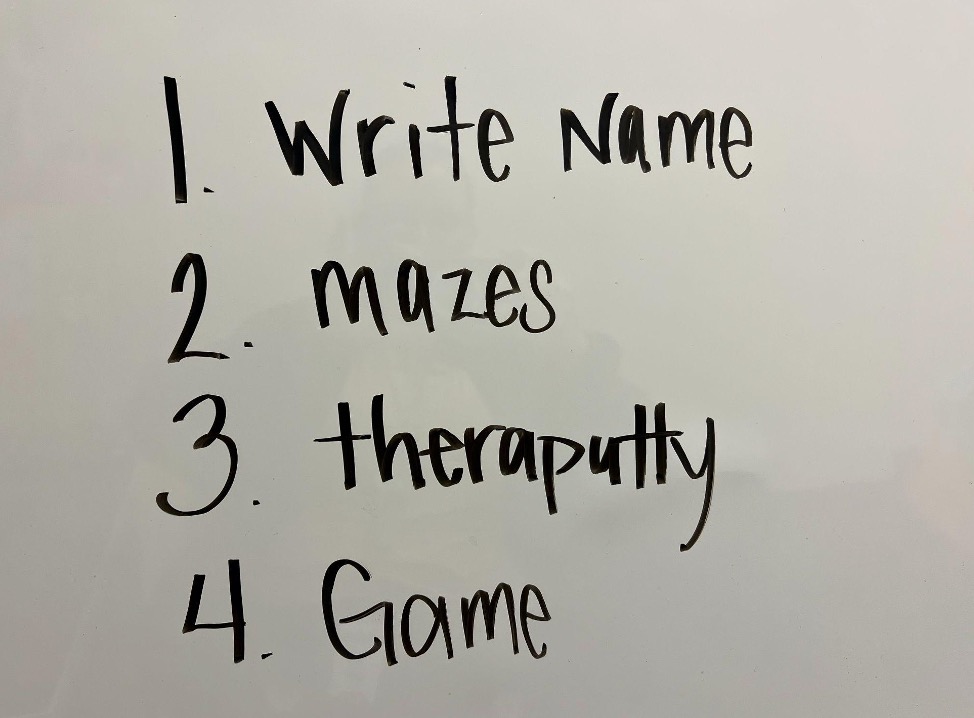
Figure 1. Example of a visual schedule.
As I write on the whiteboard, I engage with the individual, saying, "Hey, friend, what are we going to do first?" Their enthusiasm is palpable as they respond, "You want to write your name, then we're going to do mazes, and after that, it's time for theraputty. Then, the grand finale is playing the game, and finally, we're all done." This clear visual sequence guides them through our session, ensuring that they know what to expect.
For some individuals, a little extra reinforcement and the checkboxes (in Figure 2) can go a long way.
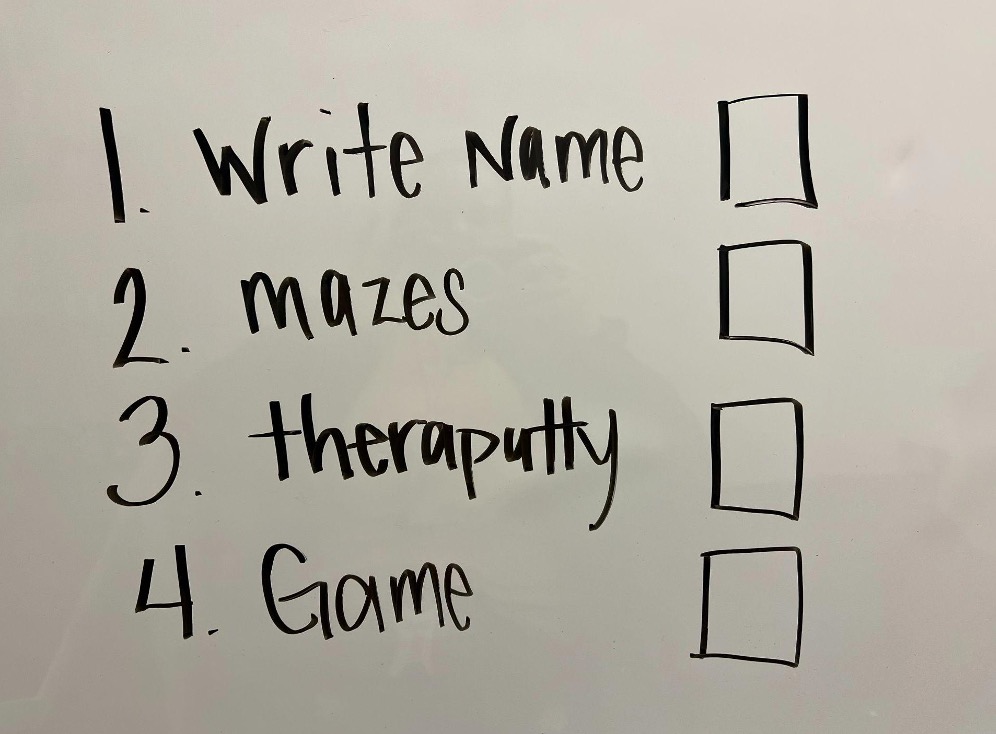
Figure 2. Visual schedule with checkboxes.
I often customize the reinforcement system to suit the individual's preferences and needs. It might be as simple as saying, "Hey, I'm going to give you a happy face because you did an amazing job." This immediately conveys their progress. "Once you collect four happy faces," I explain, "you'll earn xyz (well-deserved reinforcer)." Alternatively, a checkmark system might be more effective. It all depends on the individual's unique style.
I like to present this plan visually, as shown in Figure 3, creating a "crazy road" for them to navigate. Each step is clearly mapped out - first, we tackle beads, then move on to jumping jacks. I often allow them to actively engage in the process by erasing or crossing off completed tasks. This not only enhances their sense of accomplishment but also signifies that once they complete this journey, it's time to head home. Pairing visuals with this roadmap can be particularly beneficial.
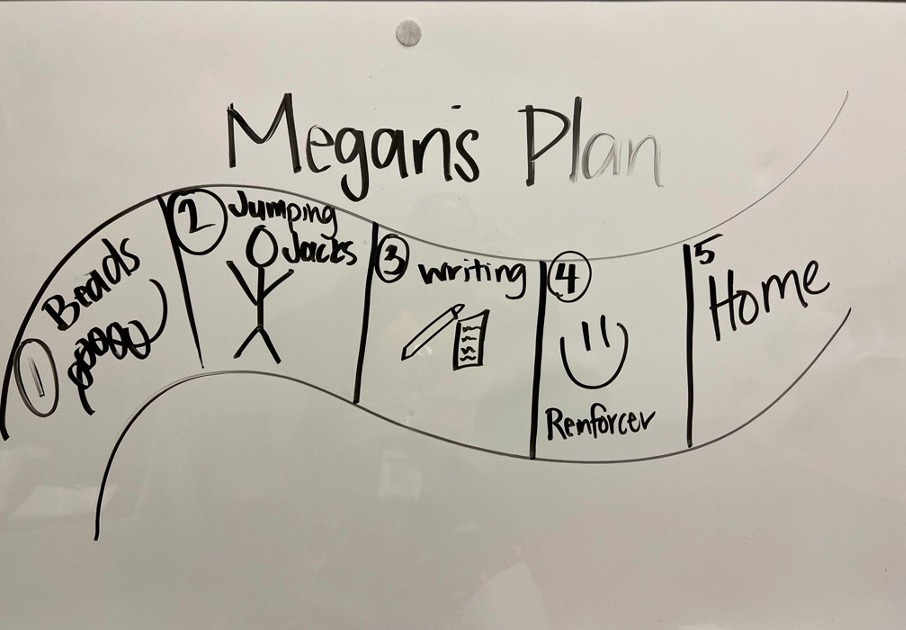
Figure 3. A visual schedule is drawn as a "crazy road."
Figure 4 shows an example of a tic-tac-toe schedule.
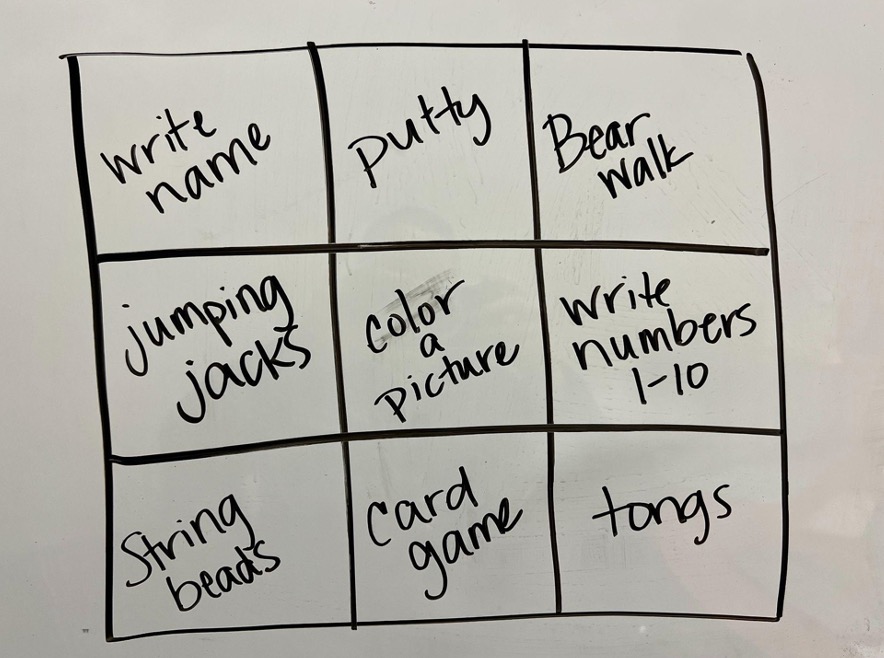
Figure 4. A tic-tac-toe visual schedule.
I like to keep things flexible, especially when I'm working on the go. So, whether I have a whiteboard or just a blank piece of paper, I can quickly sketch out a "first, then" plan. It's a straightforward way to communicate our goals for the session. For instance, I draw a simple illustration as seen in Figure 5.
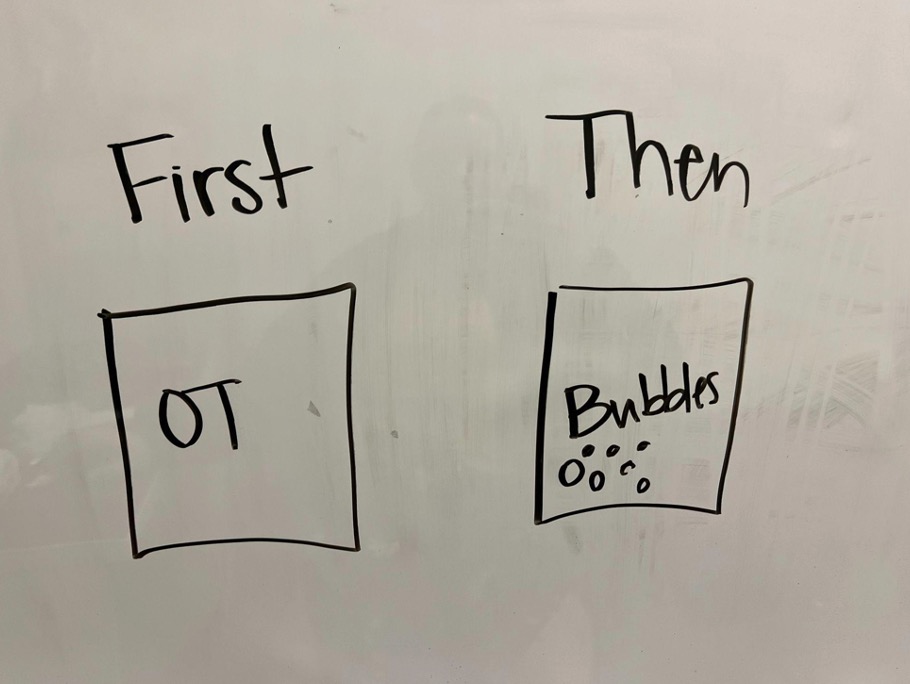
Figure 5. An example of a first-then schedule.
Mood Check In
- Zones of Regulation
- Blue-Sad or Tired
- Green-Happy or Calm
- Yellow-Worried or Silly
- Red-Overjoyed or Angry
- Little Spot of Emotion
- A Little SPOT of Anger
- A Little SPOT of Anxiety
- A Little SPOT of Happiness
- A Little SPOT of Sadness
- A Little SPOT of Love
- A Little SPOT of Confidence
- A Little Peaceful SPOT
- A Little Scribble SPOT
Integrating mood check-ins can be a valuable addition to your sessions. You might be familiar with frameworks like the "Zones of Regulation," or there's a tool called "Little Spot of Emotion" that some social workers use in my school district. These can offer additional ways to engage with the children you work with.
For example, you could start a session by asking your young client to express how they're feeling that day. This can help them become more aware of their emotions and learn to identify them. I've observed speech therapists in our school district using such approaches. They might say, "Okay, it's time for a mood check. How are you feeling today?" The child could then respond, "I'm in the blue zone, I'm tired. That means I need..." and specify what they need, such as a hug or some quiet time. It's fantastic to witness how this helps children articulate their feelings and communicate their needs effectively.
Decision Making
- Identify the problem
- Analyze the solution
- How can you solve the problem
- Align with district/employer responsibilities
- Evaluate and reflect
Decision-making involves a structured process. It begins with identifying the problem and carefully analyzing potential solutions. The focus is on determining how best to solve the problem. It's essential to align this decision-making process with the context of your work. Furthermore, it's crucial to follow up by evaluating the outcomes and taking time to reflect. This reflection process is especially important when dealing with crises, as it allows us to learn from the experience and consider how we can improve in the future.
Problem-Solving
- Turn conflict into learning opportunities
- Be solution oriented
Thinking about our problem-solving approach, it's important to consider how we can transform conflicts into valuable learning opportunities and maintain a solution-oriented mindset. In some situations, it can be challenging to maintain a solution-oriented perspective. So, what strategies can we employ? What observations can guide us? How can we collaboratively address these issues and involve all relevant parties in the process?
Respond Quickly
- Send the message that limits are real
- Be accountable for the safety of the person and your group
Clearly communicate and enforce the boundaries you've established, holding everyone accountable for safety. Consistency is key, letting them know you will respond the same way every time. This predictability helps deter disruptive behavior as they understand the expectations for work and rewards.
Respond to Problem Behavior
- Reward positive behavior
- Validate feelings
- Think about tone and body language
Responding to challenging behavior involves rewarding positive actions, acknowledging their emotions, and being mindful of your tone and body language, as previously discussed.
De-escalation Techniques
- Don’t yell
- Validate their feelings
- Be aware of body language
- Be on their level
- Silence
- Respect refusal
- Answer questions
- Deep breathing
- Don’t try to reason
- Respect space
- Use a distraction
- Reflective listening
- Be non-judgmental
- Provide movement breaks
- Provide a calming environment
- Calming visuals
Here are some valuable de-escalation techniques. While I won't read them all, they are available in your packet for your reference. Consider creating a chart or posting these in your workspace for easy access to these helpful strategies.
Breathing Exercises
- Starfish breathing/five-finger breathing
- Lazy eight breathing
- Flowers and candles
- Shape breathing
- Dragon breaths
- Tummy breathing
Breathing exercises are incredibly useful during moments of crisis. Engaging in these exercises by yourself can often prompt individuals in crisis to join in. You can try techniques like the five-finger breathing method or the lazy eight on the wall. Pick a star or square, or even use "dragon breaths," which involve taking a deep breath and then exhaling forcefully to blow out an imaginary flame. Make these exercises engaging to help individuals remember and participate in them.
Movement Breaks
- Brain Gym Pace cards
- Calming monkeys
- Genevieve Jereb-"Jello"
- Animal walks
- Mindfulness rooms/sensory rooms
- Five-finger breathing or starfish breathing
- Lazy 8 breathing
- Mountain breathing
Incorporating movement breaks is essential, both during and before your sessions. Consider using Brain Gym Pace cards or engaging activities like calming monkeys or monkey yoga, which kids often enjoy. Music by Genevieve Jereb is set to 54 beats per minute, and her "Jello" song doubles as a proprioceptive exercise. You can also encourage animal walks on the way to a session or make use of mindfulness or sensory rooms if available. Additionally, the breathing techniques mentioned earlier, such as mountain breathing, can help maintain a calm mindset and prevent the escalation of challenging behaviors.
Sensory Walk To/From Session
- Sensory walks
- Velcro, tape, commercial
- Animal walks
- Bear, duck, crab
- Yoga to start session
You can create sensory walks to and from your session. Examples are shown in Figures 6 and 7.

Figure 6. An example of a sensory walk.

Figure 7. Another example of a sensory walk.
Sensory walks don't have to be expensive. You can use simple materials like painter's tape or invest in more commercial options based on your setting and budget. Sensory walks are a great way to incorporate movement and sensory input into transitions. They can include animal walks and yoga poses to help children regulate their systems and transition effectively. Here are some examples of basic sensory walks created with tape in school hallways to help children release energy and prepare for their sessions or classes.
Summary
Thanks for joining me today. If anyone has any questions or comments, feel free to share. I'm here to help with any further inquiries or discussions.
Questions and Answers
What does CPI stand for?
CPI stands for Crisis Prevention Intervention. This program focuses on strategies for verbal de-escalation and non-physical crisis intervention. It's essential for professionals in various fields, including education and healthcare, to understand and implement these techniques effectively to ensure the safety and well-being of individuals during moments of crisis.
References
Autism Speaks (2011). Visual supports and autism. https://www.autismspeaks.org/sites/default/files/2018-08/Visual Supports Tool Kit.pdf
Horton, A., Holman, D., Hebson, G. (2022). Occupational and physical therapists’ use of intrapersonal and interpersonal emotion regulation strategies during patient interactions: A qualitative study. The American Journal of Occupational Therapy, 76(5). https://doi.org/10.5014/ajot.2022.048199
Occupational Therapy Practice Framework: Domain and Process—Fourth Edition. (2020). Am J Occup Ther, 74(Supplement_2):7412410010.https://doi.org/10.5014/ajot.2020.74S2001
Occupational therapy’s perspective on the use of environments and contexts to facilitate health, well-being, and participation in occupations. (2015). The American Journal of Occupational Therapy, 69(Supplement_3), p1–p13. https://doi.org/10.5014/ajot.2015.696S05
Other Sources:
Crisis Prevention Institute: CPI nonviolent crisis intervention training. Instructors guide (2020).
Crisis Prevention Institute: A school wide approach: Managing student behaviors (2021).
Crisis Prevention Institute: How to set limits (2021).
Citation:
Paben, M. (2023). Employing verbal de-escalation strategies in occupational therapy. OccupationalTherapy.com, Article 5645. Available at www.OccupationalTherapy.com
